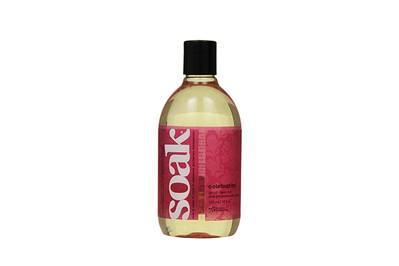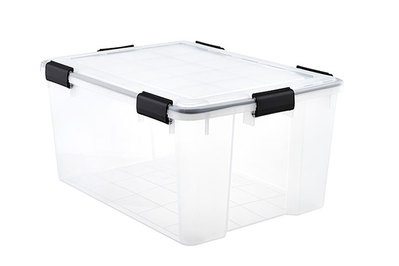Whether you’re breaking out breezy linen shirts for spring or throwing on chunky woolen knits in the early days of fall, the changing of the seasons is almost always accompanied by the tedious task of putting seasonal clothes in storage.
Organizing may seem like a pain, but as cleaning expert Jolie Kerr, author of the great Ask a Clean Person newsletter (formerly at Esquire) told us, “When you are doing something that feels like a chore, remind yourself that what you’re doing now is a gift that you are giving your future self.” We spoke to Kerr and other experts about how to pare down and safely store your clothes during seasonal changeover.
Chuck it
Don’t saddle your future self with stuff you don’t need, even if your past self spent a lot of money on it. “We [all] have clothes that we hold onto out of guilt, or habit, or hopefulness that we might wear them again,” said Erin Boyle, author of the book Simple Matters: Living with Less and Ending Up with More. Boyle is serious about keeping a pared-down wardrobe—all of her clothes for the entire year can fit in half of a closet and three dresser drawers.
Boyle uses her limited space as a boundary for what she keeps. You too can use this tactic by deciding on an amount of space you can (or care to) dedicate to storing seasonal gear, and use that to motivate you to get rid of everything that doesn’t fit.
“Be ruthless about what you did and didn’t wear,” said Ann Lightfoot, a professional organizer at Done & Done Home. She advises taking everything out of the closet so you can really get a good look at it. It helps to have a “lighthearted cheerleader,” she said—a friend or sibling, definitely not a romantic partner—to help assess what clothes actually work for you. A good test for if you’re working solo, said Lightfoot: If you try something on and hesitate to leave the house to grab a cup of coffee in it, consider getting rid of the item entirely.
For the things you don’t want, you can take them to Goodwill, The Salvation Army, sell them on resale sites like Poshmark and Depop or post them on your local Buy Nothing Facebook group. You can also look for local charities that will arrange a pick-up, or if you live in a city like New York, you can take advantage of stooping culture and leave things on the curb with a “free” sign.
Clean it
Before you pile everything else either back into your closet or into storage containers, make sure it’s clean. “It’s a huge bummer when you’re [unpacking and] like oh, wait, I just chucked all this stuff in here and it smells and looks gross,” said Kerr. It’s even more heart-breaking when a beloved sweater is eaten by moths while in storage.
Dirty clothes will only get smellier as the months roll by. Invisible stains can turn into dark spots—and food for bugs. For machine-washable items, we recommend Tide Ultra Oxi Powder Laundry Detergent. For sweaters, delicates, and items labeled hand-wash only, we’re fans of Soak, an easy-to-use, no-rinse detergent. (If you’re not sure if you’ve worn something since it was last washed, it won’t hurt to wash it again.)
It’s especially important to clean garments made from organic fibers (like wool and silk) before storing them. This extra step can prevent moths from feasting on your clothes. Items that are labeled dry-clean only should get a trip to the cleaners before going into storage.
Make sure the location where you are putting your clothes is clean too, said Kerr. If some clothes are going back into the closet, run the vacuum first. Wipe out dresser drawers with an all-purpose cleaner. (This might be common sense, but it’s worth the reminder because it can be disastrous: No bleach!)
If you are putting things in plastic storage bins, wipe down both the inside and the outside, because you don’t want dust that builds up to transfer to your hands, and then onto your clothes, said Kerr. Go over the inside with a dry rag or paper towel to make sure you have really eliminated all moisture.
Put it away
The first step in storing clothes is assessing your environment. Beware of overly humid or damp basements or attics, or areas with a lot of direct sunlight—all of which can cause fabric to deteriorate or fade.
If your only storage options are in especially damp parts of your home, there are still some precautions you can take to keep your clothes safe. Although we haven’t officially tested it, senior staff writer Tim Heffernan, who wrote our guide to the best dehumidifiers, says that a product like DampRid might be effective for “small spaces with no option of ventilation or a dehumidifier.” (One Wirecutter staffer has had success using the DampRid fragrance-free hanging bags in her attic closets throughout the sticky summer months in Georgia, swapping them out once they fill up every month or so).
For larger areas like a basement, Tim says that if “clothes and linens are stored in an airtight box (like something plastic with a well-fitted lid so there’s not much air exchange with the outside), I think a box of DampRid [suited to the size of the area]…would be effective and worth the few bucks they cost.” But you’ll likely see more results with one of our dehumidifier picks, including the Midea 50-pint cube, which have all been tested in damp basements.
Sweaters, t-shirts, and knits can be prone to stretching when kept on hangers, so these types of garments should always be folded regardless of whether they’re going away for the season or are being used daily. Long term seasonal storage for these types of garments is a task best left to sealable storage, like plastic totes or cedar chests because they keep out pests. (Cedar blocks on their own aren’t going to eradicate a moth problem, experts have told us, but we’ve found that they’re helpful at least to reduce any smells inside new plastic tubs so it doesn’t transfer to your clothes.)
We recommend the Iris Weathertight Totes. But before you go out and buy containers, scope out your space to make sure they’ll fit. Take measurements of wherever you’re going to put them (e.g., in a separate closet, under the bed, in a finished basement).
When cycling items like dresses, jumpsuits, and tailored suits out of your seasonal rotation, it’s best to keep them on supportive wooden hangers that help them keep shape, rather than folding them, or keeping them on thin plastic or wire hangers. (For anything sentimental or pricey, or particularly hefty like wedding dresses, it’s best to check with the manufacturer for storage recommendations). Button-front shirts can go either way, either on thin hangers or neatly folded in a plastic tote.
For clothes that aren’t in regular use, avoid leaving them in plastic dry-cleaning bags or sleeves, said Kerr—they prevent the fabric from breathing, and can lead to yellowing. Instead, keep hanging items inside of cotton garment bags such as Container Store’s Cotton Gusseted Jacket Bags, which Mean Girls star and home decor influencer Rajiv Surendra uses and tags with printed pictures of the outfit so he can remember what’s inside. For nicer pieces, we recommend hanging them on wooden hangers in their own garment bags.
By far the most important part of cycling out and storing clothes is to take a moment and assess the needs of each garment. It might be tempting to shove everything into a black garbage bag and forget about it all for the next nine months, but these additional steps can make room in your closet for seasonal clothes, and help keep your stored garments safe, clean, and free from holes, blotches, or musty odors until you pull them back out next year.







